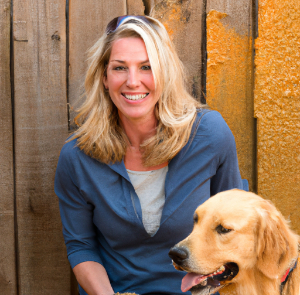In order to have a well behaved dog it needs a certain amount of discipline. Without discipline, dogs will resort to a variety of unwanted behaviors associated with lack of limitations and rules.This lack of guidance from owners easily results in dogs with serious behavior problems because the dog does not know his place in the pack. In order to work well, however corrections must be delivered following some basic rules.
You must correct your dog in the moment you see him exhibiting the unwanted behavior. This means intervening ideally during or within one second according to H. Ellen Whiteley, DVM . A correction done one moment prior or afterward, will most likely be ineffective.
For instance, if a dog lately soils in the house, it is useless to punish the dog upon coming home and finding the soiled area. Because dogs live in the present they will have no clue as to why they are being punished and very likely will just deduct that the owner is unpredictable striking out for no reason. The dog will be confused and think he got punished for what he was doing seconds ago, perhaps just wagging his tail in happiness. This can significantly ruin the owner/dog bond.
In order to be effective, the correction must have a certain level of impact. There are softer and harder dogs when it comes to corrections. The softer dogs require a very mild correction in order to get the message across, whereas the harder dogs require a bit harsher correction. This does not mean however, that the dog needs pain to learn. The correction just needs to be at the right level where the dog remains a bit startled.
Ideally the correction should not allow the dog to associate it with the owner. Doing so, may ruin the precious dog and owner bond. Also, if the dog associates the correction with the owner, he will soon learn that he can misbehave when the owner is not there. For instance, a dog that tends to get into the flowerbeds may learn to avoid them when the owner is around. In the owner's absence therefore the habit will pursue. In this case, if a motion activated sprinkler is installed the dog will learn to avoid the flowerbed at all times..
The correction must arrive every time that the unwanted behavior takes place. It is a good practice to have all family members on the same page to avoid confusion in the dog's mind. If Rover is not allowed on the couch, the children should follow through the same protocol. Also, the couch should be off limits in any circumstance, even if Rover looks with pleading eyes. Dogs learn quickly that they can break the rules if the rules are not properly set in place.
A correction should be given without being mad or frustrated with the dog. The owner should withdraw from being emotionally transported when delivering a correction. It does not help as well assuming threatening positions as this may cause fear in the dog.
Interestingly, sometimes a correction does not require an action, rather it consists of withdrawing something that the dog likes. For instance, a dog that jumps on its owners may be corrected by turning around and not giving the dog what he craves the most: attention.
